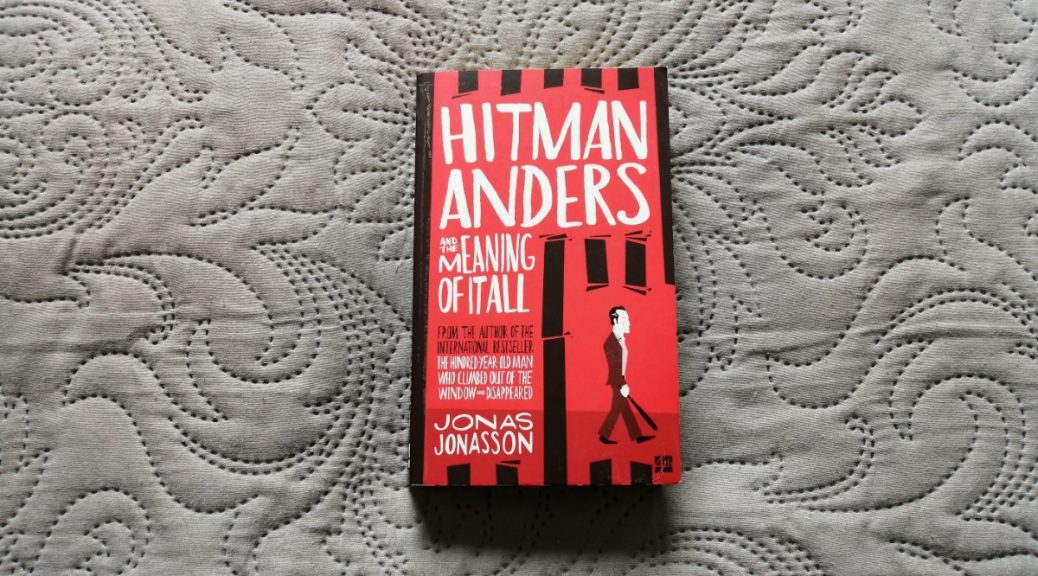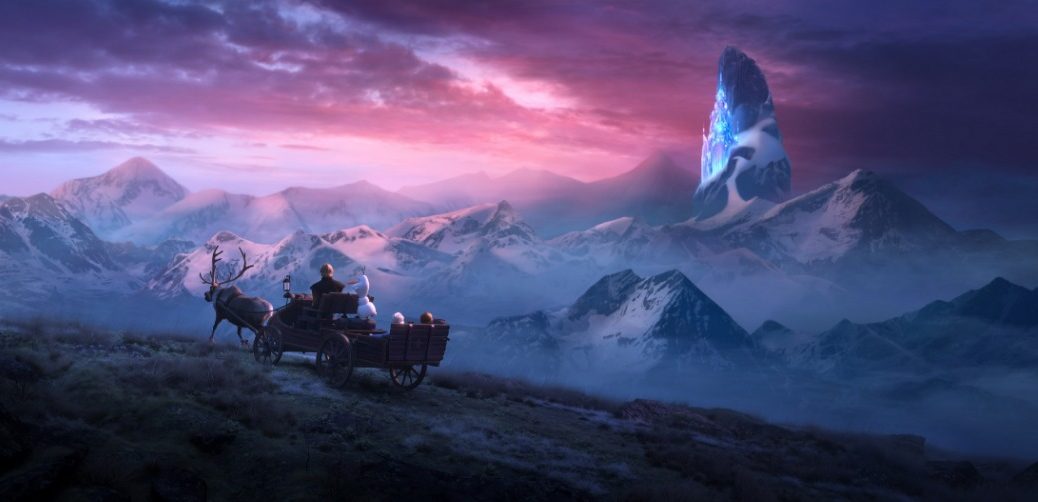The undeniable cog that drove Bad Boys was the chemistry between Mike Lowrey and Marcus Burnett, played by Will Smith and Martin Lawrence. That’s not to say the movie’s other elements didn’t deliver. Epic explosions, car chases, and miscellaneous mayhem packed an adrenalin-fuelled punch as well. Bad Boys II came out eight years after the first, and even then it felt belated.
Monthly Archives: January 2020
Around the World in Words – Grenada
Science fiction and fantasy from around the world have not been easy to come by during my reading challenge. Out of more than 100 books, only a handful of them can be categorised as such. So I was very happy to find a science fiction author for the Grenadan leg of my challenge.
Review – Hitman Anders and the Meaning of It All
Jonas Jonasson’s debut novel The Hundred-Year-Old Man Who Climbed Out the Window and Disappeared was the book I read for Sweden for my challenge to read a book from every country in the world. I enjoyed the book immensely and it’s one of my favourites of the challenge so far. Jonasson has since released a sequel to the book, which I have yet to read. In the meantime I’ve read his third novel, Hitman Anders and the Meaning of It All.
Its premise is even zanier than that of his first novel. It revolves around the receptionist of a seedy hotel who befriends (and later falls in love with) a priest. Together they devise an untoward business strategy that involves the hitman of the title. All goes well for the new couple and their new business, until the hitman finds Jesus.
A zany premise, wit, insight, and colourful characters are clear markers of this author’s work, and they’re all to be found in Hitman Anders. However, they don’t hit the mark quite as strongly as The Hundred-Year-Old Man did. It’s not fair to constantly draw comparisons, but it’s quite inevitable when it comes to an author’s work, especially when the tone is so similar and the style so distinct. Besides, I enjoyed The Hundred Year-Old Man so much, that my expectations were high.
The characters aren’t quite as fully crafted or deeply delved into in Hitman Anders. Part of that can be attributed to the fact that they’re constantly referred to by their roles or nicknames: the receptionist, the priest, the count, the countess. These generic monikers somewhat distance readers from the characters – particularly the priest and receptionist – although it does add to the humour.
We know who the antagonists are in this story, but at times it’s not clear who we should be rooting for. The centrality of the priest and receptionist will have you believing it’s them, but the newfound good nature of the hitman will make your favour veer towards him instead. Perhaps, just as the characters ultimately try being good and kind towards everyone, the author similarly wants us to feel a little warmth for all those who populate his story.
Review – 6 Underground
As Ryan Reynolds describes it, 6 Underground is “the most Michael Bay movie ever”. The latest action epic from the director of Bad Boys, The Rock, and five Transformers movies, brings us a premise that involves a ragtag band of vigilantes out to oust an evil dictator. This bunch includes Reynolds’s billionaire, simply going by the name of One. Like Quentin Tarantino’s gang of misfits in Reservoir Dogs, no one’s allowed to share personal details, including names. Instead of going by colours, like in Dogs, 6 Underground’s characters go by numbers – kind of like the script.
The flimsy script brings the movie’s potential crashing down as hard as any explosion in this relentless, OTT action. You could argue that this is a Michael Bay movie doing what a Michael Bay movies does, as the marketing clearly does. But Bay’s Bad Boys has an enduring legacy not just because of its action, but also because of its leads. Will Smith and Martin Lawrence get the space for their relationship to grow and the timing for their jokes to land, and they connect with their mission, thanks to Téa Leoni’s Julie Mott. Together these three set the screen alight more than any explosion.
The action set pieces in 6 Underground are great conceptually. But with the cast constantly shoved aside in their favour, the fiery explosions, car chases, exploding pools, and sinking yachts fail to impress. Lurid colours and gritty filters seem like an attempt to heighten the style, but the in-your-face product placement robs it of the kind of panache that makes a movie like John Wick so slick. And bear in mind that Wick lands its stylish thrills despite being even sillier in premise than 6 Underground. Not that this movie is trying to be the next best action movie or even interested in borrowing from other action greats (not even Bay’s own classics).
Where the action does work, is in the incorporation of parkour through the character of Ben Hardy’s Four. Its inclusion is hardly novel. Many movies have made use of the movement; notably Casino Royale, which featured one of the discipline’s greatest pioneers, Sébastien Foucan. But it’s necessary to point out in 6 Underground, because the parkour is one of few elements in the movie that works very well. This is because it’s part of a character, weaving it organically into the story – and everyone just has so much fun with it.
All the members of One’s vigilante team are a lot of fun, bringing a different skillset, attitude, and personality to the table. The cast playing them is just as awesome, but amid the relentless explosions, gunfights, and car chases the camaraderie and comedy are lost. The ending veers into sequel territory, and if Bay returns to direct, hopefully he’ll allow his earlier work to inspire him, and give his actors room to play.
6 Underground is currently available on Netflix.
William Shatner at Comic Con Africa 2019
Last year I had the opportunity to interview William Shatner during his visit to Comic Con Africa in Johannesburg, South Africa.
Watch below.
Around the World in Words – Ethiopia
The eponymous lion of Maaza Mengiste’s debut novel, Beneath the Lion’s Gaze, finds form and shape in many guises throughout her story. These include occasional ethereal allusions, which I loved and wish she’d made more of. But I suppose if she had included any more of these dream-like, leonine references, it may have started feeling too on the nose.
This is especially true given the bleak and harsh realities her characters live through in her depiction of the Ethiopian revolution of 1974. Her portrayal of these brutalities are hard-hitting and given emotional resonance through her characters’ lived experiences.
Mengiste’s story unfolds through following the lives of brothers Yonas and Dawit, as well as their father Hailu. These characters are drawn well, but my favourites were definitely the women. I loved how tough yet tender Yonas’s wife Sara is. The brothers’ mother appears briefly but leaves a lasting impact. Emama Seble’s no-nonsense attitude is a constant highlight, and little Tizita is full of feisty zeal.
Not that I didn’t like the male characters. Melaku is the endearing kiosk owner with a colourful history… which includes Emama Seble! Berhane is full of wonder and zeal, much like his friend Tizita. His brother, Robel, is utterly devoted to his sibling and mother. Familial devotion and dynamics thread their way throughout the story, whether it’s displayed between brothers, spouses, or parent and child.
Despite the strong theme and a great cast of characters, I did feel the novel lacking when it came to more intimate, interpersonal details. There is little focus on what makes Ethiopia special and how the characters engage with their country in a positive way. I love little details that tell us what the characters enjoy eating, singing, or wearing; how they spend their days and what they wish for. And I am trying to find books that don’t just point out the political turmoil countries live through, especially when it comes to Africa.
However, I can’t fault Mengiste for this, and many characters have no choice but to think of nothing beyond surviving another day. After all, her narrative focus is on exposing the violent horrors Ethiopia endured. And as much as we need to diversify our reading, and depict Africa as more than a place that is war-torn and poverty-stricken, these stories have to be told.
It’s also important to note that I’d recently come from reading two other novels depicting war and revolution, namely The Kite Runner and In the Shadow of the Banyan. Both these are told through the eyes of children, who are the stories’ central protagonists. Beneath the Lion’s Gaze does not really have a central protagonist. You could argue that it’s Dawit, but whoever you pick, it’s bound to be an adult, and this perspective makes for a shifted outlook at the horror surrounding them.
This factor is a strong reminder to always consider the context that frames your reading of an author’s work. Whether it’s your geography, your background, or just your frame of mind at the time you’re reading a book, watching a movie, or interacting with any other kind of art, there’s always something you bring to the story as well.
Review – Last Christmas
This Christmas movie may not be everyone’s cup of eggnog, but I loved it. That’s thanks in large part to its charming leads, Emilia Clarke and Henry Golding. Clarke plays Kate, a struggling singer working in a year-round Christmas shop and recovering from an illness and surgery that’s sent her into a cycle of destructive behavior. Enter Golding’s elusive Tom, and this festive rom-com begins.
Review – Frozen II
Olaf the snowman is an undisputed highlight in Frozen II, which continues the story of royal sisters Elsa and Anna in their kingdom of Arendelle. It’s hardly surprising, given how endearing he was in the first movie. The snowman peppers the sequels with comedic gems and existential pearls of wisdom, while the sisters again lead the story and provide its heart. Comedy also comes courtesy of Anna’s boyfriend Kristoff, a notable standout being his ‘80s-style musical number.
Read On!
New year, not-so-new challenge. I’ve been marching on with my challenge to read a book from every country in the world since the beginning of 2018. After two years, I’ve read 120 countries (as well as Tibet, Martinique, and Puerto Rico). The first year was spent exclusively on the challenge, but last year I slipped in one or two or three other books (The Overstory and A Little Life being two highlights).







